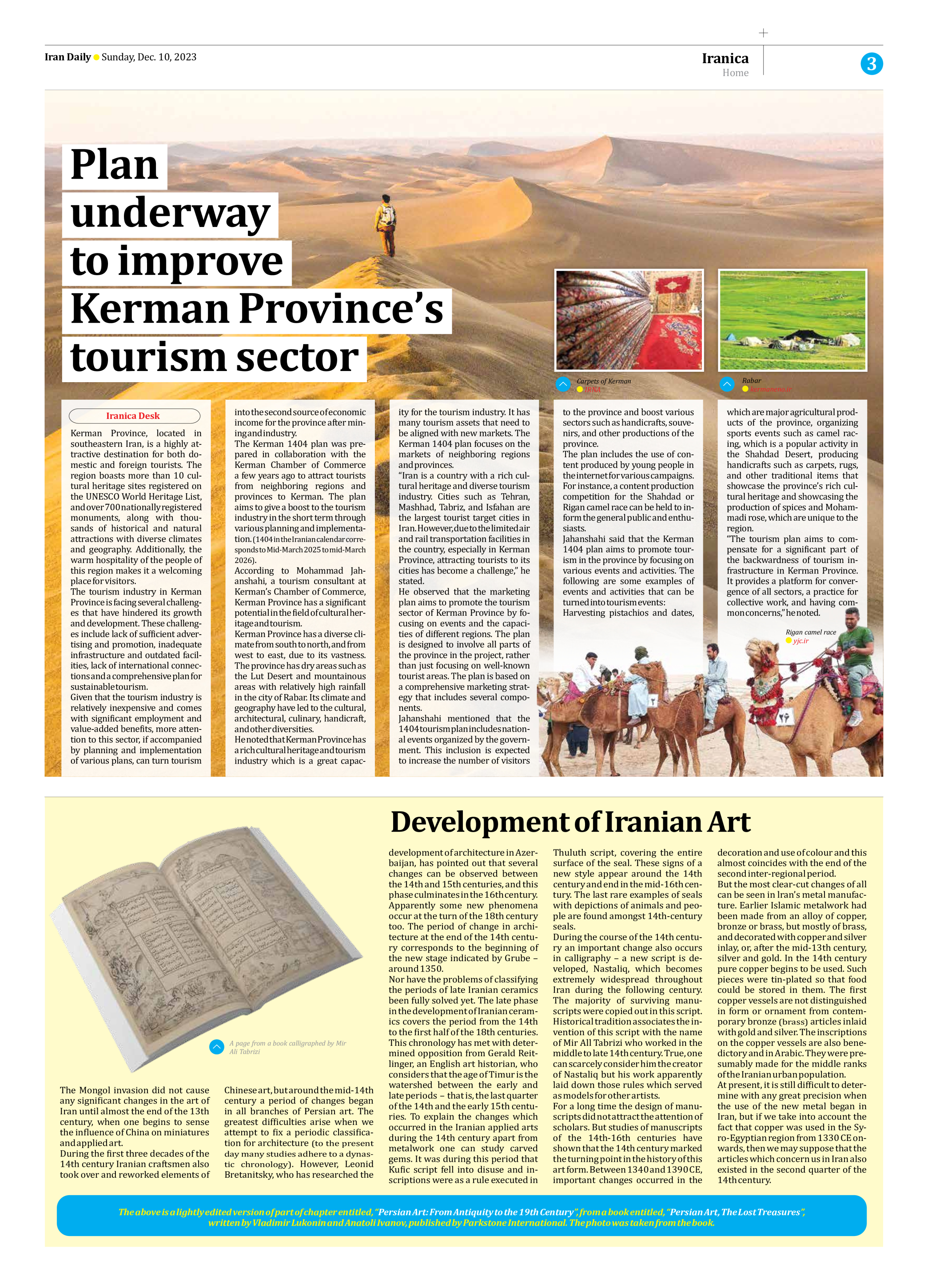
Plan underway to improve Kerman Province’s tourism sector
Kerman Province, located in southeastern Iran, is a highly attractive destination for both domestic and foreign tourists. The region boasts more than 10 cultural heritage sites registered on the UNESCO World Heritage List, and over 700 nationally registered monuments, along with thousands of historical and natural attractions with diverse climates and geography. Additionally, the warm hospitality of the people of this region makes it a welcoming place for visitors.
The tourism industry in Kerman Province is facing several challenges that have hindered its growth and development. These challenges include lack of sufficient advertising and promotion, inadequate infrastructure and outdated facilities, lack of international connections and a comprehensive plan for sustainable tourism.
Given that the tourism industry is relatively inexpensive and comes with significant employment and value-added benefits, more attention to this sector, if accompanied by planning and implementation of various plans, can turn tourism into the second source of economic income for the province after mining and industry.
The Kerman 1404 plan was prepared in collaboration with the Kerman Chamber of Commerce a few years ago to attract tourists from neighboring regions and provinces to Kerman. The plan aims to give a boost to the tourism industry in the short term through various planning and implementation. (1404 in the Iranian calendar corresponds to Mid-March 2025 to mid-March 2026).
According to Mohammad Jahanshahi, a tourism consultant at Kerman’s Chamber of Commerce, Kerman Province has a significant potential in the field of cultural heritage and tourism.
Kerman Province has a diverse climate from south to north, and from west to east, due to its vastness. The province has dry areas such as the Lut Desert and mountainous areas with relatively high rainfall in the city of Rabar. Its climate and geography have led to the cultural, architectural, culinary, handicraft, and other diversities.
He noted that Kerman Province has a rich cultural heritage and tourism industry which is a great capacity for the tourism industry. It has many tourism assets that need to be aligned with new markets. The Kerman 1404 plan focuses on the markets of neighboring regions and provinces.
“Iran is a country with a rich cultural heritage and diverse tourism industry. Cities such as Tehran, Mashhad, Tabriz, and Isfahan are the largest tourist target cities in Iran. However, due to the limited air and rail transportation facilities in the country, especially in Kerman Province, attracting tourists to its cities has become a challenge,” he stated.
He observed that the marketing plan aims to promote the tourism sector of Kerman Province by focusing on events and the capacities of different regions. The plan is designed to involve all parts of the province in the project, rather than just focusing on well-known tourist areas. The plan is based on a comprehensive marketing strategy that includes several components.
Jahanshahi mentioned that the 1404 tourism plan includes national events organized by the government. This inclusion is expected to increase the number of visitors to the province and boost various sectors such as handicrafts, souvenirs, and other productions of the province.
The plan includes the use of content produced by young people in the internet for various campaigns. For instance, a content production competition for the Shahdad or Rigan camel race can be held to inform the general public and enthusiasts.
Jahanshahi said that the Kerman 1404 plan aims to promote tourism in the province by focusing on various events and activities. The following are some examples of events and activities that can be turned into tourism events:
Harvesting pistachios and dates, which are major agricultural products of the province, organizing sports events such as camel racing, which is a popular activity in the Shahdad Desert, producing handicrafts such as carpets, rugs, and other traditional items that showcase the province’s rich cultural heritage and showcasing the production of spices and Mohammadi rose, which are unique to the region.
“The tourism plan aims to compensate for a significant part of the backwardness of tourism infrastructure in Kerman Province. It provides a platform for convergence of all sectors, a practice for collective work, and having common concerns,” he noted.







